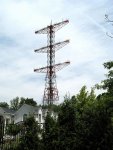DylanMadigan
Member
I was looking at this and this,
Being relatively new to the radio world, I was wondering if I would see all that much of a difference between these two antennas. I do see that the radiation pattern is half as wide on the more expensive one, but does that mean much of a signal improvement? Like it would be worth the cost?
I was also wondering if this antenna would be safe to leave plugged in during a thunder storm or if I would still have to worry about the repeater (and everything else) melting violently. I do have a lightning arrestor on the line near the base of the tower, but its $20 from ebay so I'm not sure how well it would actually work. Some sort of little gas thing. I was told that if my current antenna was hit, the arrestor wouldn't stop a surge from hitting my equipment.
Being relatively new to the radio world, I was wondering if I would see all that much of a difference between these two antennas. I do see that the radiation pattern is half as wide on the more expensive one, but does that mean much of a signal improvement? Like it would be worth the cost?
I was also wondering if this antenna would be safe to leave plugged in during a thunder storm or if I would still have to worry about the repeater (and everything else) melting violently. I do have a lightning arrestor on the line near the base of the tower, but its $20 from ebay so I'm not sure how well it would actually work. Some sort of little gas thing. I was told that if my current antenna was hit, the arrestor wouldn't stop a surge from hitting my equipment.


